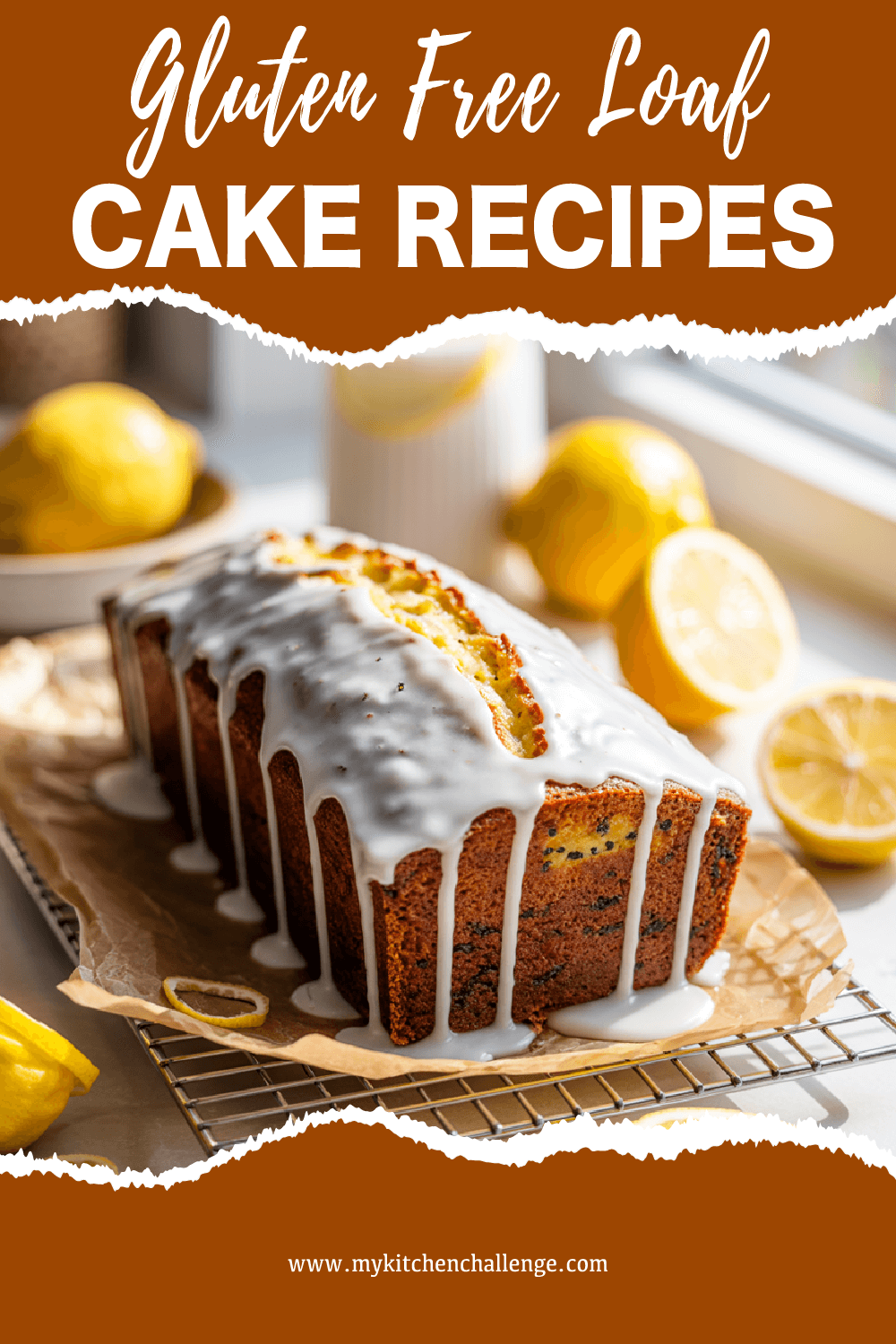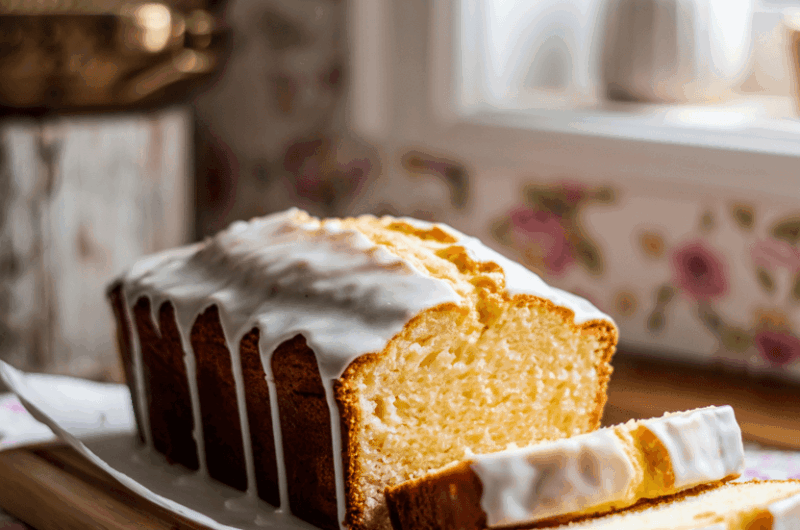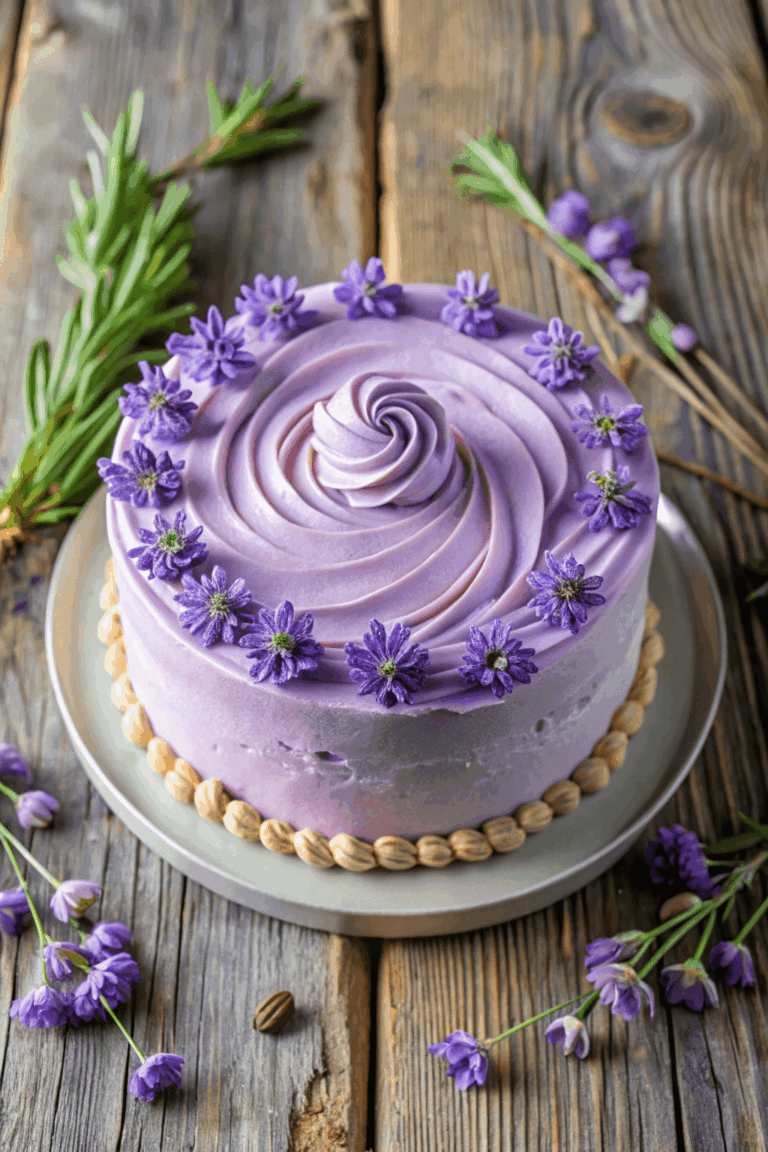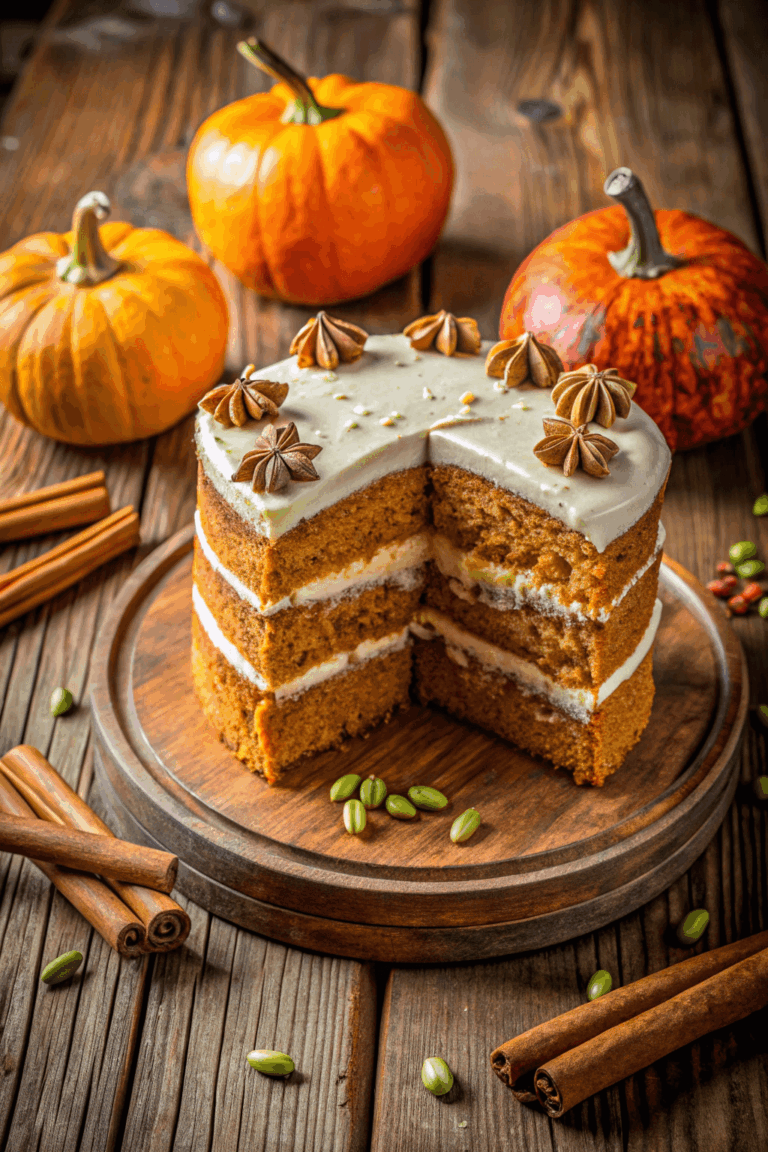The Best Fluffy Pancakes recipe you will fall in love with. Full of tips and tricks to help you make the best pancakes.
Loaf Cake Recipes: Simple, Sweet, and Irresistibly Sliceable
Ever just stood in your kitchen, staring at your mixing bowls like they owe you rent, and thought—“You know what I need? A loaf cake.” Not a towering celebration cake or a flashy layered showstopper.
Just a simple, dependable, slice-it-up-and-snack-all-day kinda loaf. I swear, these underrated beauties are the true MVPs of home baking.
Whether it’s vanilla that hugs your soul, lemon that zaps you awake, or something rich and chocolatey that feels like a reward after adulting—there’s a loaf cake for that.
I’ve been diving into recipes that go beyond the basics and trust me, once you taste these, you’ll never look at loaf cakes the same way again. We’re talking easy steps, real flavor, and the kind of results that make you look like a domestic genius (without actually trying that hard).
Let’s roll up those sleeves, preheat the oven, and get into the best loaf cake recipes you’ll ever meet.
Recipe Snapshot
| Category | Details |
| Yield | 1 standard loaf (8.5″x4.5″) |
| Serving Size | 1 slice |
| Prep Time | 20 minutes |
| Bake Time | 60 minutes |
| Total Time | 1 hour 20 minutes |
| Calories per Serving | ~320 |
| Primary Cooking Method | Baking |
| Occasion | Everyday, Tea Time |
| Diet Type | Vegetarian |
Calories are approximate and may vary depending on exact ingredients used.
Loaf Cake Recipes
Course: DessertCuisine: VariousDifficulty: Easy1
slice20
minutes1
hour320
kcalIf you’re someone who loves the smell of vanilla, the zing of lemon, or the deep indulgence of chocolate—loaf cake recipes are your new BFF.
These bakes are unfussy, flavorful, and just begging to be sliced up for breakfast, dessert, or that random 3pm snack.I’ve rounded up the best ideas out there and reworked them so they’re not only easy to follow but deliver amazing texture and taste every time.
Whether you’re a beginner baker or just looking to level up your snack game, there’s a loaf in here that has your name on it.
Ingredients
1/2 cup (113g) unsalted butter, softened
1/4 cup (60ml) vegetable oil
1 cup (200g) granulated sugar
3 large eggs, room temperature
1/2 cup (120ml) milk or buttermilk
1 1/2 cups (190g) all-purpose flour
1 1/2 tsp baking powder
1/4 tsp salt
1 tsp vanilla extract (or base flavor)
Directions
- Preheat and Prepare the Baking Setup
Start by preheating your oven to 350°F (175°C). While the oven is warming up, take your loaf pan—preferably 8.5″ x 4.5″—and lightly grease it with butter or nonstick spray.
Then line it with parchment paper, letting a couple inches of paper hang over the sides. This creates convenient handles for lifting the loaf out later without it falling apart. - Cream Together Butter, Oil, and Sugar
Place your softened butter and vegetable oil into a large mixing bowl. Add in the granulated sugar. Using a hand mixer or stand mixer fitted with the paddle attachment, beat everything together on medium-high speed for about 3–5 minutes.
The goal is to make it look pale, fluffy, and slightly increased in volume—this means you’ve incorporated enough air to give your loaf a tender crumb. - Add Eggs Gradually for Structure
Crack in one egg at a time, mixing thoroughly after each addition. This technique ensures that each egg gets fully emulsified into the batter before the next one arrives, which minimizes the risk of curdling. Scrape down the bowl as needed to make sure everything is blending smoothly. - Infuse the Flavor
Now’s the time to stir in your vanilla extract—or whatever primary flavor you’re working with (like lemon juice, almond extract, or espresso). Mix just until the liquid is incorporated. This step boosts aroma and sets the tone for the entire cake. - Sift and Whisk Dry Ingredients
In a separate medium-sized bowl, sift the all-purpose flour to eliminate any clumps. Add in the baking powder and salt, then whisk them together to distribute everything evenly. This gives your cake consistent rise and a balanced salty-sweet flavor. - Combine the Wet and Dry in Stages
Add one-third of the dry mixture into your wet batter and mix on low just until it’s absorbed. Follow with half of the milk or buttermilk. Continue alternating until everything is added—always finishing with the dry mixture.
Use a spatula or low-speed mixer to fold gently, being cautious not to overmix. A slightly lumpy batter is okay; overmixing will make the loaf dense. - Transfer Batter and Prep for Baking
Scrape the batter into your prepared loaf pan using a rubber spatula. Smooth out the top gently to create an even surface. Tap the pan a few times on the countertop to release any trapped air bubbles—this prevents uneven baking and unsightly tunnels. - Bake It Right
Place the loaf in the center rack of your oven and bake for 55 to 65 minutes. Check at the 50-minute mark. Insert a toothpick or skewer into the middle of the loaf—if it comes out clean or with just a few moist crumbs, your cake is done. If it comes out with wet batter, give it another 5–10 minutes and test again. - Cool Gradually and Release Carefully
Once baked, remove the loaf pan from the oven and let it rest on a cooling rack for 15 minutes. Don’t skip this—cooling in the pan helps firm up the structure slightly so it doesn’t fall apart. After 15 minutes, lift the loaf out using the parchment paper edges and place it on the rack to cool completely before slicing or glazing.
You may or may not mention the measurements, but write it in such a way that the process becomes visually clear and feels like it’s being made based on the ingredients.
You may or may not mention the measurements, but write it in such a way that the process becomes visually clear and feels like it’s being made based on the ingredients.
Extra Tips
- Use room temperature ingredients: Cold eggs or milk can make your batter lumpy and uneven. Let them sit out for 30 minutes before baking.
- Sift your dry ingredients: This aerates the flour and helps everything mix more evenly, leading to a softer crumb.
- Create a domed top: Run a butter knife through the center of the batter once it’s in the pan to guide the rise and form that classic split.
- Avoid opening the oven too soon: Try not to peek during the first 45 minutes of baking. A sudden drop in temp can make the loaf sink.
- Cool in the pan first: Let your loaf rest in the pan for 15 minutes before moving it to a wire rack. This helps it set and slice cleanly.
- Let it rest overnight: Flavors deepen after resting. If you can wait, baking it a day ahead makes it taste even better.
Equipment List
- Loaf pan (8.5″ x 4.5″)
- Mixing bowls
- Hand mixer or stand mixer
- Measuring cups and spoons
- Rubber spatula
- Whisk
- Cooling rack
- Parchment paper
- Zester (for citrus loaf cakes)
- Saucepan (for syrups or glazes, optional)
Detailed Step-by-Step Instructions:
1. Preheat and Prepare the Baking Setup
Start by preheating your oven to 350°F (175°C). While the oven is warming up, take your loaf pan—preferably 8.5″ x 4.5″—and lightly grease it with butter or nonstick spray. Then line it with parchment paper, letting a couple inches of paper hang over the sides. This creates convenient handles for lifting the loaf out later without it falling apart.
2. Cream Together Butter, Oil, and Sugar
Place your softened butter and vegetable oil into a large mixing bowl. Add in the granulated sugar. Using a hand mixer or stand mixer fitted with the paddle attachment, beat everything together on medium-high speed for about 3–5 minutes. The goal is to make it look pale, fluffy, and slightly increased in volume—this means you’ve incorporated enough air to give your loaf a tender crumb.
3. Add Eggs Gradually for Structure
Crack in one egg at a time, mixing thoroughly after each addition. This technique ensures that each egg gets fully emulsified into the batter before the next one arrives, which minimizes the risk of curdling. Scrape down the bowl as needed to make sure everything is blending smoothly.
4. Infuse the Flavor
Now’s the time to stir in your vanilla extract—or whatever primary flavor you’re working with (like lemon juice, almond extract, or espresso). Mix just until the liquid is incorporated. This step boosts aroma and sets the tone for the entire cake.
5. Sift and Whisk Dry Ingredients
In a separate medium-sized bowl, sift the all-purpose flour to eliminate any clumps. Add in the baking powder and salt, then whisk them together to distribute everything evenly. This gives your cake consistent rise and a balanced salty-sweet flavor.
6. Combine the Wet and Dry in Stages
Add one-third of the dry mixture into your wet batter and mix on low just until it’s absorbed. Follow with half of the milk or buttermilk. Continue alternating until everything is added—always finishing with the dry mixture. Use a spatula or low-speed mixer to fold gently, being cautious not to overmix. A slightly lumpy batter is okay; overmixing will make the loaf dense.
7. Transfer Batter and Prep for Baking
Scrape the batter into your prepared loaf pan using a rubber spatula. Smooth out the top gently to create an even surface. Tap the pan a few times on the countertop to release any trapped air bubbles—this prevents uneven baking and unsightly tunnels.
8. Bake It Right
Place the loaf in the center rack of your oven and bake for 55 to 65 minutes. Check at the 50-minute mark. Insert a toothpick or skewer into the middle of the loaf—if it comes out clean or with just a few moist crumbs, your cake is done. If it comes out with wet batter, give it another 5–10 minutes and test again.
9. Cool Gradually and Release Carefully
Once baked, remove the loaf pan from the oven and let it rest on a cooling rack for 15 minutes. Don’t skip this—cooling in the pan helps firm up the structure slightly so it doesn’t fall apart. After 15 minutes, lift the loaf out using the parchment paper edges and place it on the rack to cool completely before slicing or glazing.
You may or may not mention the measurements, but write it in such a way that the process becomes visually clear and feels like it’s being made based on the ingredients.You may or may not mention the measurements, but write it in such a way that the process becomes visually clear and feels like it’s being made based on the ingredients.
Substitution Options
Sometimes you’re out of something. Sometimes you’re catering to a dietary need. Either way, loaf cakes are flexible friends—and here’s how you can twist them to fit what you’ve got on hand.
Butter and Oil
If you’re out of butter, just use all oil instead. It gives the cake a super moist texture, though you might miss a bit of that buttery richness. On the flip side, if you have no oil, going full butter still works—it’ll be a touch drier but super flavorful.
Milk and Buttermilk
When it comes to milk, feel free to use any plant-based alternative like almond, oat, soy, or even coconut milk if you’re leaning tropical. If you need buttermilk and don’t have it, just stir a tablespoon of vinegar or lemon juice into regular milk and let it sit for five minutes. You can also use plain Greek yogurt or sour cream, which both bring in extra richness.
Egg Alternatives
For egg-free versions, unsweetened applesauce or mashed banana (about 1/4 cup per egg) works beautifully. Or mix 1 tablespoon of ground flaxseed with 3 tablespoons of water and let it gel—hello, flax egg!
Flour Options
If gluten is off the table, a good 1:1 gluten-free flour blend will save the day. Just make sure it includes xanthan gum to hold everything together.
Sugar Substitutes
Want to reduce sugar? You can cut it down by a quarter cup without sacrificing much. Prefer an alternative sweetener? Coconut sugar or maple syrup will do the trick, though your loaf might be a bit darker and taste a bit deeper.
Flavor Swaps
As for flavors—if you’re out of vanilla, try almond extract for a nutty depth or a splash of citrus zest (lemon, lime, or orange) for something zingy. Cozy spices like cardamom, nutmeg, cinnamon, or even a touch of allspice can completely change the vibe of your loaf.
Feeling adventurous? Add matcha powder for a grassy, green-tea twist, or a dash of rose water or orange blossom water for floral notes. Want warmth and earthiness? Try chai spice or pumpkin spice. Chocolate lovers can mix in cocoa powder, or even espresso for that mocha fix.
These swaps don’t just rescue your recipe—they’re your gateway to loaf cake magic, one tweak at a time.
Make-Ahead Tips
One of the best things about loaf cakes is how forgiving and prep-friendly they are. If you’re planning ahead for guests, busy weeks, or just your future self’s cravings, here’s how you can get a head start without sacrificing flavor or texture.
You can prepare the batter a day in advance. Just cover it tightly and refrigerate it in the loaf pan. Before baking, let it sit at room temperature for about 30 minutes so it isn’t ice-cold going into the oven. This helps ensure even rising.
Baked loaf cakes are even better the next day. Once fully cooled, wrap the loaf tightly in plastic wrap or foil. Store it at room temperature for 24 hours to let the flavors meld and the crumb settle. The result? A moister, more flavorful slice.
For long-term make-ahead magic, loaf cakes freeze like a dream. After cooling, wrap the whole loaf or individual slices in plastic wrap, then foil, and freeze for up to 2 months. When you’re ready to eat, thaw overnight in the fridge or let it sit at room temp for a few hours. You can also give slices a quick zap in the microwave for that just-baked warmth.
Whether you bake it today or next week, loaf cakes always have your back.
Storage Instructions
Once your loaf cake is fully cooled, wrap it tightly in plastic wrap or pop it in an airtight container. It’ll stay fresh at room temperature for up to 3 days.
To store longer, freeze the whole loaf or individual slices wrapped in plastic and foil. They’ll keep for up to 2 months. Thaw at room temp or warm up a slice in the microwave for that fresh-baked vibe.
FAQ
- Can I use self-raising flour instead of all-purpose flour?
Yes, but skip the baking powder and salt if you do. Self-raising flour already includes both. - Why did my loaf sink in the middle?
Usually from underbaking or opening the oven too early. Make sure it’s fully set before checking and don’t open the oven for the first 45 minutes. - How do I know when it’s baked through?
Stick a toothpick into the center—if it comes out clean or with just a few moist crumbs, it’s ready. - Can I double the recipe for a bigger cake?
You can, but it’s better to bake in two separate pans for even cooking. One big loaf might not bake evenly. - What’s the best way to get a crunchy top?
Sprinkle a little demerara sugar or raw sugar over the batter before baking. You’ll get a crackly, golden top. - Can I make this vegan?
Yes! Use a plant-based milk, replace eggs with flax eggs or applesauce, and swap butter with vegan butter or more oil.
How to Enjoy Every Slice
Loaf cakes are the ultimate versatile treat—perfect with coffee, dressed up for dessert, or tucked into a lunchbox for a sweet midday win. For a classic touch, slice it thick and serve with a warm cup of tea—Earl Grey, chai, or lemon-ginger all work beautifully. If you’re feeling brunchy, pair it with yogurt, fresh berries, or even a savory scramble for a sweet-salty combo that hits all the right notes.
For dessert, loaf cake slices love to be topped. Think whipped cream, crème fraîche, or a scoop of vanilla bean ice cream with a drizzle of fruit compote or caramel sauce. For a cozy snack, toast a slice and slather it with butter, nut butter, or jam—it’s comfort food at its finest. Hosting a gathering? Cut the loaf into small squares or fingers and serve them with toothpicks as part of a dessert platter.
No matter how you enjoy it, loaf cake proves time and again that it’s a treat that fits any moment—from solo snacking to celebration spreads.
Nutritional Information
What’s Inside Each Slice
While the exact numbers can vary depending on your ingredients and add-ins, here’s a general idea of what you’re looking at with a standard slice of this master loaf cake:
- Calories: ~320
- Total Fat: 17g
- Saturated Fat: 6g
- Cholesterol: 75mg
- Sodium: 150mg
- Total Carbohydrates: 38g
- Sugars: 22g
- Protein: 4g
Adding nuts, chocolate, or fruit will shift these numbers slightly, especially sugar and fat content. If you’re adapting for dietary needs, consider using a nutrition calculator to get more precise values based on your exact ingredient list.

Final Thoughts
At the end of the day, loaf cakes are the comfort food we didn’t know we needed—but always deserve. Whether you’re going classic vanilla, zesty lemon, bold coffee, or something delightfully fruity, this master recipe gives you a solid base to build your flavor dreams on.
And the best part? You don’t need fancy tools, complicated steps, or a ton of experience—just a good bowl, a little time, and your oven’s love.
So go ahead—play with flavors, try new toppings, experiment with textures. The humble loaf cake is way more exciting than it lets on. Happy baking, and may your slices always be soft, moist, and perfectly golden.





